Contents
We all know that there are some books that you can’t stop thinking about even after you finish reading them, their characters become like family members, and their stories touch your life. Victor Hugo’s immortal work “Les Misérables” novel is exactly such a book. Maybe it intimidated you with its thickness, or maybe it’s one of those books that you heard the name and said “I’ll read it sometime“. But should I tell you a secret? Among those pages that look like bricks, you will find humanity’s deepest pains, purest loves, greatest quests for justice, and most shocking sacrifices. We also recommend that you read the author’s other novel, The Last Day of a Condemned Man.
This unforgettable work, set in 19th century France, sheds light on the lower classes of society, the perversions of the justice system, and the transformation of the human soul through the life of Jean Valjean. While the book covers the inner journey and rebirth of an ordinary criminal, it also offers the reader a great test of empathy and conscience.
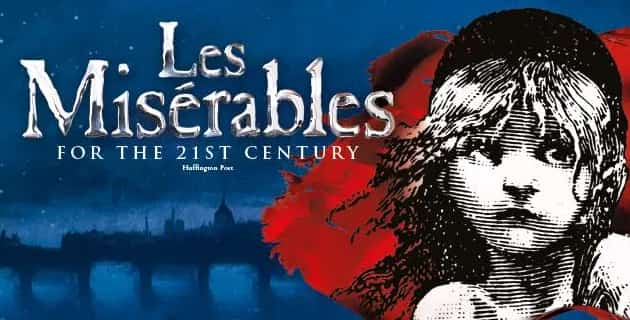
In the depths of Les Misérables, there are not only individual stories but also the bitter realities of society. While the author examines the effects of poverty, inequality and despair on people through his characters, he also emphasizes the transformative power of hope and love. With both its literary power and its humanitarian messages, the novel has managed to become a classic that remains relevant for every period and deeply affects its readers.
In this article, I will try to explain from my own perspective, with my most sincere feelings, why “Les Misérables” is not just a novel, and why people of all ages and walks of life should read it over and over again. Fasten your seat belts, we are embarking on an unforgettable journey to the heart of 19th century France, following Jean Valjean!
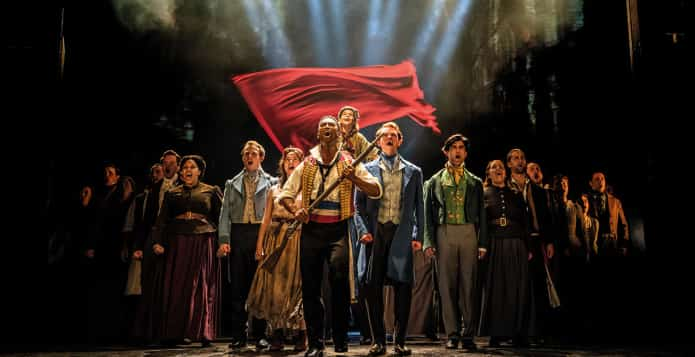
Journey to the Heart of Les Misérables!
When we say “Les Misérables”, the first thing that comes to mind is the epic story of Jean Valjean, who was sentenced to hard labor for stealing a loaf of bread and who, despite being freed years later, could never escape the merciless shadow of society and the law. But this enormous novel does not only tell the personal struggle of Jean Valjean, it also drags us into the turbulent streets of 19th century France, and the dark corridors of Paris, where poverty and injustice were rampant.
While we watch Valjean escape from his past and his efforts to establish an honorable life with a new identity, we also see a social, political and moral panorama of the France of that period. Hugo teleports us to that period with a time machine and places us right in the middle of the events.
The time period in which the novel takes place is the painful years of France after Napoleon. Dreams of great revolutions are still fresh, but poverty, inequality and social unrest are at their peak. In such an atmosphere, Hugo makes us witness not only the magnificent boulevards of Paris, but also the misery in the back streets, the endless class struggles and the student uprisings where republican ideals re-emerged. The sections describing the Paris Uprising of 1832 (June Revolt) in particular are one of the most striking and unforgettable parts of the novel. Historical events are so skillfully intertwined with the fates of fictional characters that it is as if we are fighting with them on those barricades.
Although Jean Valjean’s story is the main axis, “Les Misérables” has a rich plot in which many different lives intersect and intertwine. The tragic story of Fantine who sacrifices herself for her daughter Cosette, Cosette’s difficult childhood spent with the cruel Thénardier family, Cosette’s blossoming love with the idealistic young Marius Pontmercy, Javert’s relentless pursuit…
All these side stories feed the main story and add incredible depth to the novel. Each character has their own drama, their own hopes and disappointments. Hugo creates a great picture of humanity by weaving these different lives together like a lace.
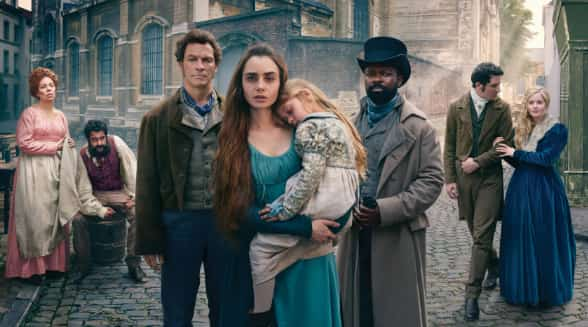
Paris of the Period and Victor Hugo’s Observations
The scope of the novel is so broad that sometimes you feel like you are in a history book, sometimes a philosophy text, and sometimes a lyrical poem. Hugo opens long parentheses on many subjects, from the Parisian sewage system to monastic life, from the slang of the period to a detailed analysis of the Battle of Waterloo. These sections may seem a bit tiring for some readers, but they are actually vital for us to understand the texture of the world in which the novel takes place.
The author aims to convey to us not only the characters but also the spirit and atmosphere of a period. For this reason, this novel is a work that should be read patiently and digested, promising a new discovery on every page.
In conclusion, the story of “Les Misérables” takes us beyond just an individual escape and chase. It takes us to the darkest and brightest corners of the human soul, the cruelty of social injustice, and the purest forms of love and sacrifice. The streets of Paris are like a giant stage that shapes the characters’ destinies, witnesses their pain, joy, and rebellion. You experience so many different emotions throughout the story that when you finish the book you feel both sad and cleansed. That’s the magic of the novel.
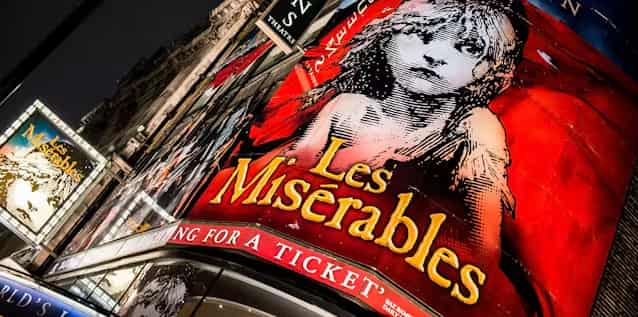
Les Misérables Characters: Jean Valjean, Javert and Others
One of the most important elements that makes a book unforgettable is undoubtedly its characters. “Les Misérables novel” offers a feast in this regard. The characters created by Victor Hugo are so vivid, so real and so deep that we not only read them, but also live and feel them with them. Each of them has their own internal conflicts, motivations and unforgettable lines. From Jean Valjean to Javert, Fantine to Cosette, Marius to Éponine, each of them has taken their place among the most iconic figures in literary history. Let’s take a closer look at some of these unforgettable characters.
- Jean Valjean, who is at the center of the novel, is undoubtedly one of the most complex and beloved characters in literary history. His life of imprisonment, which begins because of a loaf of bread he stole to feed his hungry nephews, makes him a “miserable” outcast from society. However, the incredible mercy and kindness shown by Bishop Myriel becomes a turning point in Valjean’s life. Now, while he is running away from the ghost of his past, he also becomes someone dedicated to doing good and helping others. The struggle between good and evil, hope and despair within him, reflects one of the most fundamental conflicts of the human soul. Valjean represents the power of forgiveness and a second chance.
- Inspector Javert, who seems to be the exact opposite of Jean Valjean, is a strict defender of law and order. For him, the world is black and white; criminals are always criminals and must be punished. His relentless pursuit of Valjean is not only a duty, but also a requirement of his own sense of justice. However, in the face of Valjean’s unexpected kindness and sacrifices, Javert’s seemingly unshakable values begin to be questioned over time. His tragedy is that his strict rules are inadequate in the face of the complexity of humanity. Javert becomes, in a sense, a victim of his own truths, and evokes both anger and pity in the reader.
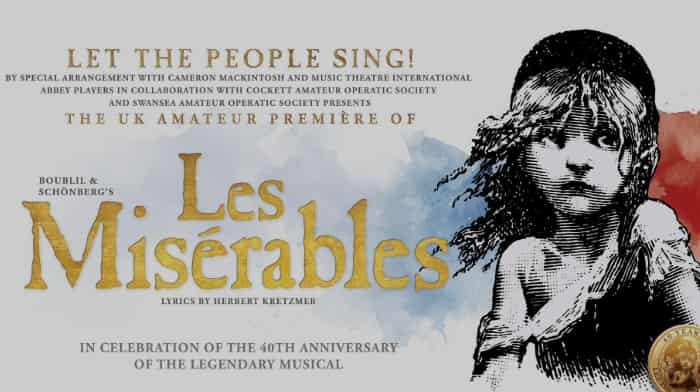
Fantine, Cosette ve Pontmercy
- Among the female characters, Fantine and her daughter Cosette carry one of the most touching stories in the novel. Fantine is a tragic figure who makes every sacrifice to take care of her daughter Cosette after being abandoned by the man she loves, struggling with the cruelty of society and poverty. Her experiences reveal how vulnerable women of the period were and the hypocrisy of society. Cosette, on the other hand, is a symbol of innocence and hope, growing up under the sacrifices of her mother and the protection of Valjean. Her story shows that love and compassion can be a light even in the darkest conditions.
- Other unforgettable characters in the novel include the idealist revolutionary young Marius Pontmercy, Éponine Thénardier, who tears our hearts out with her unrequited love for Marius, and the Thénardier couple, who are the embodiment of evil and greed. Marius and his friends represent the idealism of youth as they fight for freedom and justice on the barricades. Éponine is perhaps one of the most tragic and beloved characters in the novel; Despite growing up in misery, she is devoted to Marius with pure love and sacrifices her life for him. The Thénardiers, on the other hand, are completely “miserable” characters who always think of their own interests, lack moral values. With this rich range of characters, Hugo masterfully portrays all the colors of human nature.
The Deep Messages Victor Hugo Whispers to Us
It would be a great injustice to see Les Misérables as merely a gripping adventure or an emotional drama. With this great work, Victor Hugo whispers universal messages to us that go far beyond its time and are still valid today. The novel masterfully deals with many deep themes such as poverty, injustice, morality, mercy, sacrifice, love, revolution and human dignity. While Hugo holds a mirror up to the social problems of 19th century France, he also makes shocking questions about the human condition of all times. For this reason, Les Misérables is a masterpiece that gains different meanings, makes one think and inspires each time it is read.
One of the strongest themes of the novel is undoubtedly the tension between the concepts of justice and mercy. In contrast to the strict, legalistic understanding of justice represented by Javert, the importance of mercy, forgiveness and a second chance is emphasized in the person of Jean Valjean and Bishop Myriel. Hugo shows that laws do not always provide justice and can sometimes disregard human dignity and conscience. It whispers that true justice is possible not with the dry letters of the law but with the compassion in the heart of man. Jean Valjean’s transformation is proof of how even the most “miserable” person can be elevated with love and compassion.

Love and sacrifice are also fundamental emotions that have penetrated the marrow of the novel. The superhuman sacrifices Fantine makes for her daughter Cosette, the risks Jean Valjean takes to protect Cosette by loving her like his own daughter, Éponine’s unrequited love for Marius, which disregards her own life… All these examples reveal the purest and strongest forms of love.
According to Hugo, love is a sacred emotion that connects people to life, gives it meaning, and gives hope even in the most difficult conditions. This love is not only a romantic love, but also a deep compassion and devotion felt for people and humanity.
Why You Should Read Les Misérables?
Les Misérables is not only a literary work, but also a guide to life. It tells all kinds of human conditions, with their pain, joy, hope and disappointment, so realistically that it is impossible not to find a piece of yourself while reading it. Hugo not only tells us a story with this work, but also makes us ask deep questions about justice, mercy, love and human dignity.
When you read this book, you will better understand what justice really means, the power of forgiveness, how love can overcome all obstacles and how human dignity is above all else. If you haven’t read it yet, believe me, you are missing out. Les Misérables should be read, felt and thought about again and again.
And here we are at the end of this long journey… We can talk for hours and write pages about “Les Misérables”, but no words can fully represent the emotions you will feel and the experience you will have while reading that book. This great work of Victor Hugo is not just a novel, it is a school of life. There is pain, tears, anger, but also hope, love, compassion and most importantly, a huge humanity. If you have not read “Les Misérables” until today, please do yourself a favor and do not postpone this unique experience.
It may require some patience, you may get tired in some parts, but I am sure that when you finish it, you will say, “I am glad I read it.”
